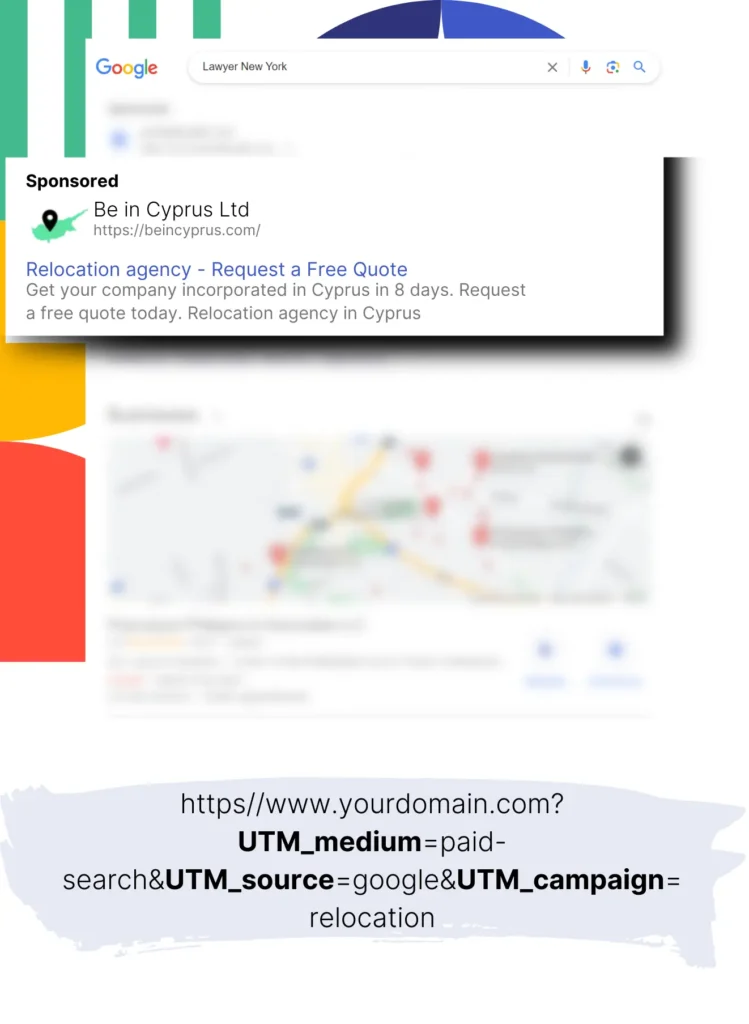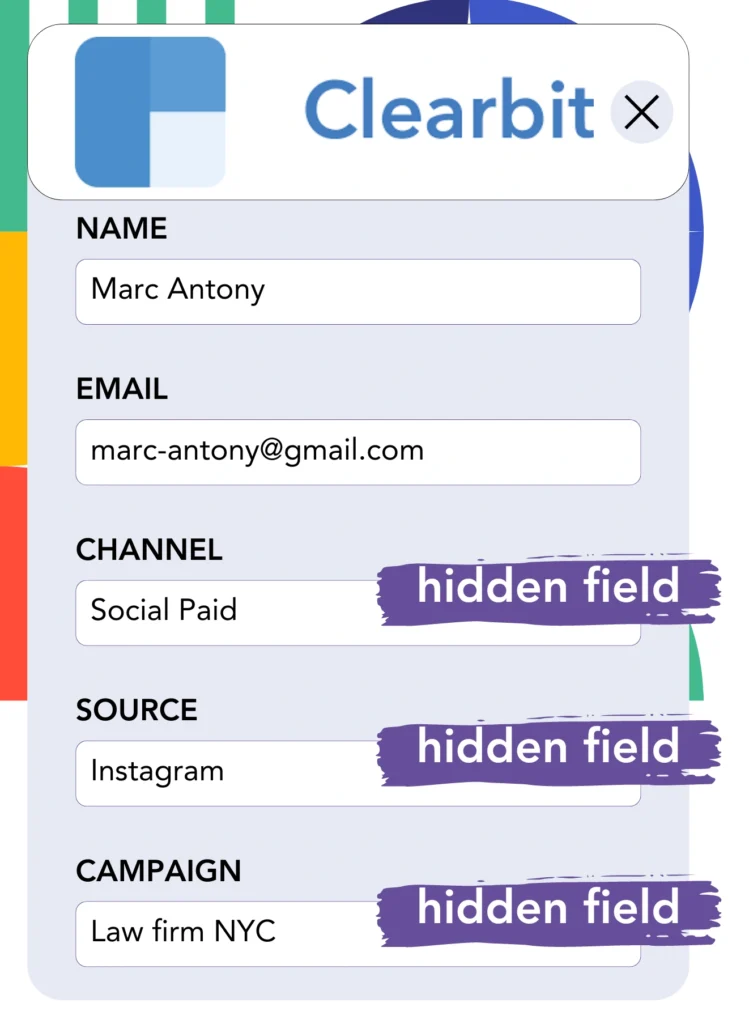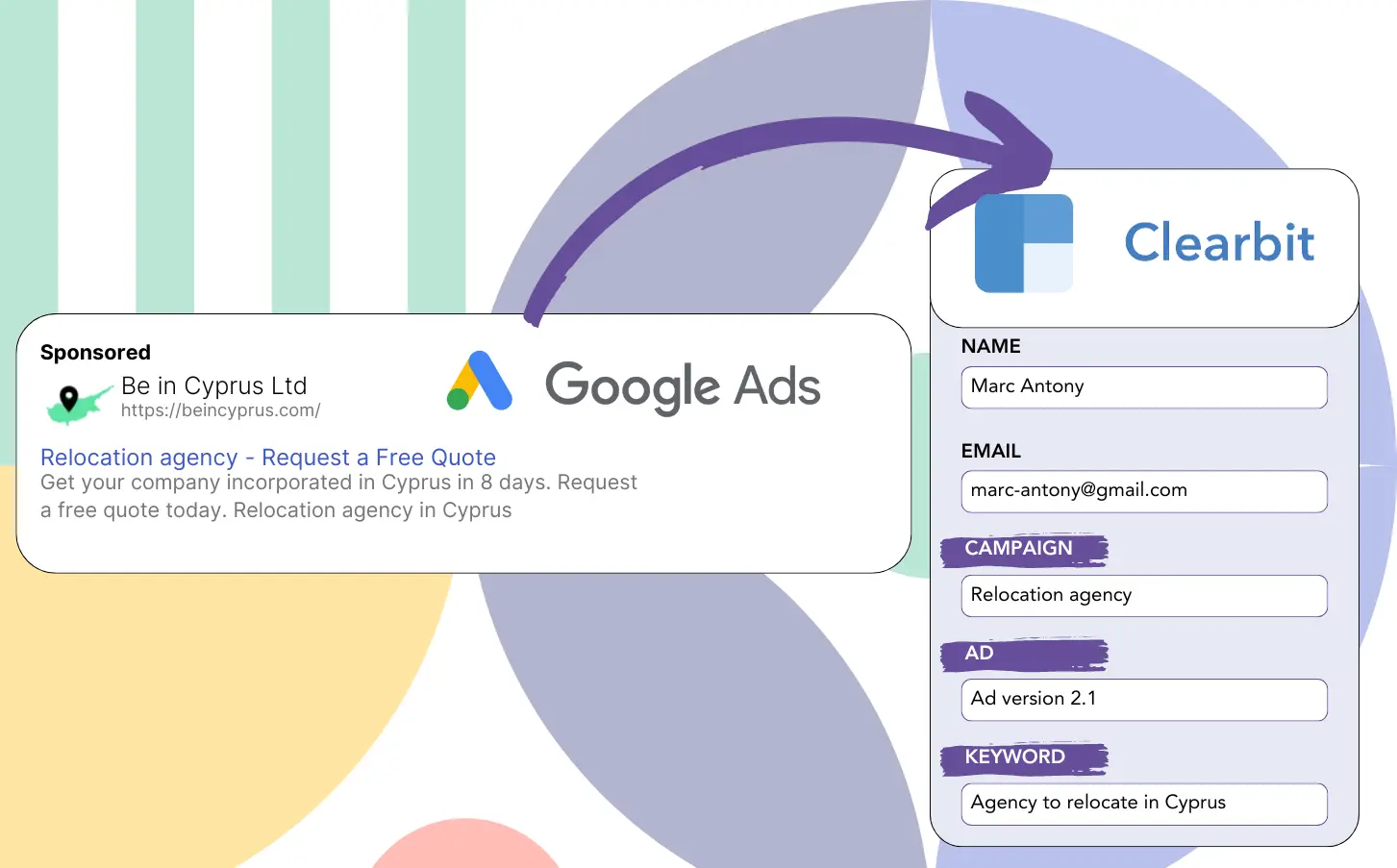Are you looking to understand which Google Ads campaigns are leading to your lead acquisition?
This is a common problem where Google Ads provides lead totals for campaigns, ads, or keywords without detailed information on each lead.
As a result, you are unable to determine which campaign, ad, or keyword was behind the leads that turned into customers.
Leadsources is the solution to this problem.
Leadsources offers the ability to follow Google Ads metrics (campaign, ad, keyword, etc.) at the lead level.
With Clearbit Forms, you can keep track of Google Ads information (campaign, ad, keyword, etc.) for each lead.
By reviewing reports such as “Keywords with the highest lead numbers,” you can decide which keywords to keep or discard.
Let’s get into it!
Capture Google Ads lead data in Clearbit Forms in 4 steps
Step 1: Add Leadsources in the head tag of your website

Sign up to Leadsources.io, and benefit from our 14-day free trial.
Place the Leadsources code within the head tag of your site. No coding experience is needed.
Simply follow this easy step-by-step guide.
Step 2: Add the UTM parameters to your Google Ads campaigns

Apply the UTM parameters you want to track to each of your Google Ads campaigns.
These are some UTM parameters you can use in your ad:
- UTM_source
- UTM_campaign
- UTM_term
- UTM_content
Along with UTM parameters, Leadsources gathers information on the channel, landing page, and landing page subfolder to give you a complete lead-level overview.
Step 3: Add the hidden fields in Clearbit Forms

As visitors enter their details in your Clearbit Forms (name, email, etc.), Leadsources automatically populates the hidden fields with Google Ads data (campaign, ad, keyword, landing page, etc.).
To do so, follow the provided guide for adding hidden fields to Clearbit Forms.
Your Clearbit Forms will have Google Ads data stored directly by Leadsources.
Step 4: Capture the Google Ads data in Clearbit Forms

Leadsources captures the Google Ads details (campaign, ad, keyword, landing page, etc.) when a visitor clicks on your ad and visits your page.
The hidden fields of your Clearbit Forms receive Google Ads data automatically from Leadsources.
After submission, the Google Ads data, together with the form responses, are directed to the Clearbit Forms submissions page.
How does Leadsources work?
Inserting the Leadsources code into your website’s head tag will enable it to capture Google Ads data (UTM parameters and referrer) on every site visit.
The Google Ads information is stored directly in the hidden fields of your Clearbit Forms.
When UTM parameters are absent in the URL, Leadsources will still capture data using the referrer:
- Channel
- Source
- Campaign
- Landing page
- Landing page subfolder
This technique provides the ability to track essential lead source details even when UTM parameters are missing, including:
- On Google Search
- On your Instagram bio link
- On your social media posts
- Etc.
Most tools capture lead data only with UTM parameters (primarily for paid and referral channels) – this is a significant issue!
Leadsources can gather lead data from all channels, even if UTM parameters are not provided:
- Organic Search
- Paid Search
- Organic Social
- Paid Social
- Referral
- Affiliate
- Display Advertising
- Direct Traffic
This ensures all lead source data is tracked and consolidated into one main location.
How to run performance reports
With your Google Ads data available in Clearbit Forms, you can now create performance reports like:
- Leads per campaign
- Leads per ad
- Leads per keyword
- Etc.
This enables you to manage your Google Ads spending more effectively.
Let’s go through the various reports you can put together.
Lead performance reports
You can generate reports that indicate the number of leads created by:
- Channel
- Campaign
- Ad
- Keyword
- Landing page
- Landing page subfolder
Example #1
Create a report titled “Leads by Channel” by exporting data from campaigns on multiple channels (SEO, PPC, email, etc.).

Example #2
After recognizing the channel that generates the most leads (e.g., Google Ads), you can dive deeper by selecting it to view the lead count for each specific ad campaign.

Example #3
Once you identify the campaign with the highest lead output, you can further explore which keywords are producing these leads.

Sales performance report
Finding which ads and keywords generate the most leads is significant, but do these also result in increased revenue?
Transferring your Clearbit Forms submissions to a CRM (like GoHighLevel) helps in creating complete sales reports.
Example:
| Channels | Search Paid | Social Paid |
| Leads | 50 | 75 |
| Sales | 5 | 6 |
| Average order value | $150 | $100 |
| Revenue | $750 | $600 |
After reviewing your ads on Google and Facebook, you found that Social Paid ads were more successful in generating leads than Search Paid ads.
Analysis over several weeks showed that Search Paid generated greater revenue with fewer leads compared to Social Paid. This supports the choice to increase the budget for Search Paid campaigns.

